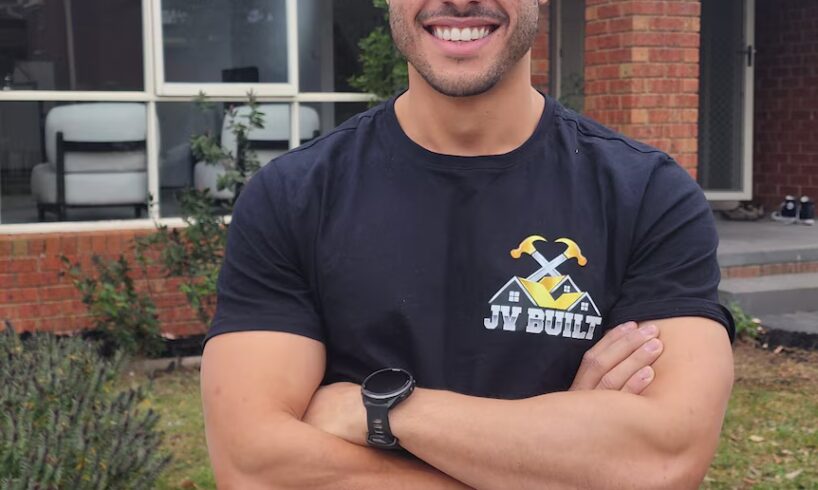
Australia’s property market is heating up again, with record auctions over spring, and the return of both first home buyers and investors pushing up house prices.
The latest data from research firm Cotality showed national home values rose 1.1 per cent over the month of October, and 6.1 per cent over the year.
It was the fastest pace of home value growth in more than two years, “confirming a new cycle of growth”, Cotality said.
All capital cities saw price rises, with Perth leading the gains, followed closely by Brisbane.
The combined regions saw a 1 per cent gain over the month, and a 7.5 per cent lift over the year.
With more buyers in the market competing for limited housing stock, and more interest rate cuts expected in 2026, many analysts think the only way for property prices to go is up.
Dig deeper into the housing crisis
The once affordable suburbs becoming unattainableFixing housing prices could take a generation
“October actually showed a real pick-up … with the pace of gains increasing in most parts of the country, but particularly regional Australia,” Cotality head of research Eliza Owen said.
Ms Owen said demand for homes was still outstripping supply, and home values would have jumped by up to 7 per cent by year’s end.
She said the chance of a Melbourne Cup Day rate cut was now slim, given the higher-than-expected inflation rate in the September quarter.
“It seems that a November rate cut is off the table … but that doesn’t rule out further rate cuts in 2026 and it doesn’t rule out further price rises for the rest of this year.
“We’re definitely expecting a pretty strong result for [house price growth] this year, potentially around 6 or 7 per cent off the back of first time buyer incentives, limited levels of supply and also the rate cuts we’ve already seen boosting growth capacity,” Ms Owen said.
Cotality head of research Eliza Owen says demand is still outpacing the supply of homes to buy. (ABC News: John Gunn)
Ms Owen said prices would continue to rise next year, but may happen at a softer pace.
“For 2026, I think it’s possible we could see something a bit softer, maybe in the 4 to 5 per cent range,” Ms Owen said.
A different price index from REA Group’s PropTrack supported the uptrend, with national home prices up 0.6 per cent last month, with values at a new record after the 10th consecutive month of growth.
That has pushed national prices up 7.5 per cent over the past year, with all capitals at record levels except for Hobart, PropTrack reported.
Investor lending on the rise, creating ‘risk’
In its October financial stability review, the Reserve Bank warned that a surge in investor activity could exacerbate price rises, even as government incentives help more first home buyers enter the market with smaller deposits.
The RBA’s own data shows that investor borrowing has been increasing faster than lending to owner-occupiers.
The RBA says more investors are returning.
“Investor activity tends to drive housing price dynamics to a greater extent than owner-occupier activity [and investor loans may prove to be at greater risk of default in a severe downturn],” the RBA said.
“A high concentration of investors could therefore contribute to a housing price upswing that raises the risk of, or exacerbates, a subsequent market correction down the track.”
No housing supply quick fix, says RBA governor
Ms Owen said that five years ago investor participation in the mortgage market was sitting at quarter of new loans — “now it’s up to almost 40 per cent of new loan originations as of the June quarter”.
“Basically, as capital gains have increased and the difference between owner-occupier and investor mortgages have narrowed, we’ve seen a substantial pick-up in investor activity,” she said.
“You’ve also got first-time buyers … with the expansion of the 5 per cent deposit scheme and an increase in rents potentially prompting more people to get out of the rental market and into home ownership if they can.”
But she noted investors were more active in the market than first home buyers because of affordability constraints and the fact they “may have a bit of equity under their belt already if they own investment properties”.
First home buyers are being lured into the market but increasingly having to compete with investors. (ABC News: John Gunn)
Auction activity increases during spring
Real estate agents and mortgage brokers have also reported more demand from both investors and first home buyers, who are taking advantage of lower interest rates and government schemes that allow deposits as low as 5 per cent.
Ray White real estate agent Jack Rickard told ABC News he sees competition between the two demographics at auctions in Melbourne.
“People are keen to invest because … they’re they’re fearful it [the residential property market] is going to go up 10 per cent next year,” Mr Rickard said.
While he said there were no guarantees when it came to the magnitude of property price rises, buyers he has spoken with “are confident that over the long term the market’s going to go up”.
Jack Rickard says both investors and first home buyers are coming to his auctions to bid. (ABC News: Nassim Khadem)
Ms Owen said there had been high turnouts at auctions over spring.
The preliminary count of auctions in the week to October 25 was 3,253 scheduled auctions — 3.8 per cent higher than the same week last year, when 3,135 homes went to auction.
“You get a boost in auction activity before Cup Day, but it’s also [about] 4 per cent higher than what we saw this time last year, and it’s consistent with more sellers coming to market as prices rise and buyer demand improves,” she said.
RBA should rein in property prices
In October, Mr Rickard’s clients Carl and Chris sold their home in Melbourne’s Ferntree Gully and got a price well above their reserve.
“With the last few interest rate reductions, that’s really cemented our idea of selling this property and also the intention to purchase another property,” Chris told ABC News.
“It’s been a couple of years since we’ve had to look. It is quite competitive out there.”
Chris said the “great result” from their property sale “gives us a little bit more confidence that we can hopefully find something within a reasonable period of time”.
The first home buyers who snapped up the property, Angelina Paramita and Ji Yong Song, said rate cuts had helped them break into the market.
“We basically live in our parents’ house and … I think this is a time that we need to move on and get our first home,” Ms Paramita said.
But it was not an easy ride to purchase — the competition had been “really tough”, she said.
“We went to a couple of auctions and then obviously we got beat out.”
Angelina Paramita and Ji Yong Song buy a property in Melbourne’s east. (ABC News: Nassim Khadem)
Some first time buyers breaking in as investors
George Samios offers home loans to clients and has noticed an uptick in new home loan applications over the past six months.
“What we’re seeing on the ground here is first home buyers and investors dominating the market,” Mr Samios said.
“However, I am noticing that there are more investors in the market than first home buyers and that is actually making it really hard for first home buyers to get in the market — competing with a sophisticated investor who knows how to play real estate agents and who also knows how to offer to get a deal across the line.”
George Samios says first home buyers live with parents and buy smaller investment properties to build up equity. (ABC News: Mark Leonardi)
Mr Samios said that when first home buyers were priced out of the market for homes, some remained living with parents and then buy smaller investment properties to build up equity while they pay down the loan.
While such buyers would miss out on government first home buyer grants and incentives, he said with house prices so high, this was one way they could break into the market.
“Buying a house to live in isn’t actually the way people are getting in right now,” Mr Samios said.
That is exactly what tradie and former Big Brother contestant Jake Vella has decided to do.
He has been living at home while he builds equity by investing in property.
The 28-year-old — who is another Ray White client looking at properties in Melbourne in recent months — bought his first investment when he was just 19.
He buys homes that need renovation work, fixes them, and then rents them out.
Jake Vella is looking to invest in Melbourne. (ABC News: Nassim Khadem)
Mr Vella had purchased two investment properties in Melbourne, but recently flipped one, and has since looking to purchase another.
“I’m looking to buy an older, rundown home and I feel like pairing it with some good quality home renovations, and with the Melbourne market prices driving up, there’s some really big opportunities at the moment,” he said.
Another young investor, Tony, has also been hunting around auctions in Melbourne.
“It’s a good time right now because interest rates start to decrease and a lot of people are [jumping] into the market,” he said.
“If you don’t do this [buy property] right now, you will be regretful.”
Tony is also hunting for an investment in Melbourne. (ABC News: Nassim Khadem)
Ms Owen noted that ABS lending data showed about 6 per cent of first time buyers purchased investments, while RBA data showed a narrowing in the margin between average owner-occupier and investor mortgage rates — “that’s down to a series low of just 18 basis points”.
“We’ve actually created system where it’s more viable for some people to buy a home, not because they’re going live there, but to buy, to grow their wealth,” Ms Owen said.
RBA has never known what to do about property prices
“That’s something that could be enticing more investors into the market, and we’ve also heard anecdotes of people investing in housing for their kids,” she said.
If investor activity continued to risky levels, regulators, including the RBA and APRA could intervene, and make changes such as stopping interest-only loans.
“The regulators have noted that they are watching first home owner and investor credit, which can be associated with more risky lending types and that they can intervene if need be,” she said.
Loading…
Source





